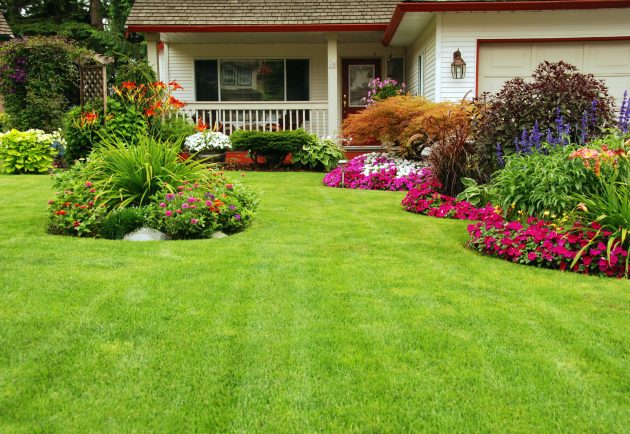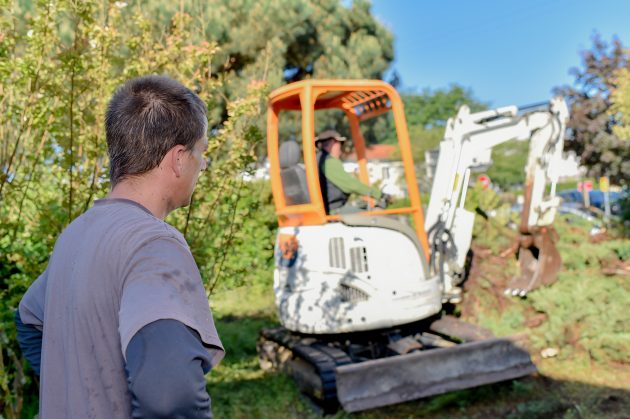It may seem overwhelming to achieve your landscaping ambitions if you don’t know where to begin. Untidy yards can be transformed into a well-kept haven. But how can you turn a boring yard into a lovely garden?
Even if you have a green thumb, redesigning your front or backyard involves time and planning. While your favorite TV shows may have you believe it can be done in a weekend, it is not. You need to consider the costs in terms of time and resources, as well as the equipment needed to change the look of your backyard or lawn.
You would need a rake, wheelbarrow, small digger, shovel, a leaf blower, and watering implements for moving things around, material handling, digging holes for garden projects, and other yard duties.
If you’re ready to get your hands dirty and start working in your yard, continue reading to learn how some basic landscape planning can help you get started.

Make Plans
Plan your garden on paper or on the computer like a landscape designer. So, you can create a beautiful design and see when things don’t fit right or if there are gaps to fill. Look at gardening books and magazines or search some websites like Pinterest for inspiration. Tour gardens. That way, you can see many ideas and pictures as references for your future garden look. Get a feel for your preferences in landscaping, flowers, and aesthetics.
Consider your water supplies, traffic patterns, and demands such as grassy areas for your pet or a small playground for your children. Add existing trees and objects, and consider the sun’s path over your property to encourage sun- or shade-loving plants.
Budget Properly
A beginner may underestimate the cost of landscaping a yard. Planting and mulching tasks alone can be expensive, and that’s only a small part of the work. Research all project costs to set a realistic target. Also, always set aside money for unforeseen expenses.
Evaluate Your Site And Garden Design
This is an important subject to cover while planning your landscape design. The major purpose of this is to discover any concerns so you can prepare your efforts and materials properly – saving you time and money in the long run.
Are there any trees on the way to groundwork? Is the ground level? If so, are there any current structures or features that need to be removed or modified? Knowing the answers to these questions can help you visualize the steps in your intended landscaping plan.
Know Where To Start
No matter how big or little your goal is, finishing it in one week is unlikely. Even if you get an expert to help you, it will take a lot of time and work. Choosing what to accomplish first can help you step up while remaining sane. Continue to split your plan down into manageable parts with realistic deadlines.
Consider Themes
Plant and material choices can be influenced by a theme. Create a relaxing garden by using regular shapes or forms. Consider your home’s architectural style when selecting a yard theme. Always keep in mind that your yard is an extension of your home.
Do you like a landscape with clean, geometric patterns? Do you prefer finer, more natural lines? Do you want a minimalistic landscape? Use these questions to pick a garden theme.
Choose The Right Plants
Study your landscape before planting. Observe the sunrise and sunset locations. Some plants prefer the morning sun but not the afternoon. Consult a local garden center about the plants you want to put in your garden.
Herbs, veggies, roses, and many bedding plants demand five or more hours of sunlight, so arrange your spaces accordingly.
Keep It Simple
Usually, the simplest solution wins. The ultimate decision doesn’t have to be difficult. Instead, focus on the essentials. Begin with a structure that allows you to simply transition from indoors to a flower garden, veggie plot, or patio. Often, the best design ideas are simple. For example, your path across the lawn, ignoring an existing walkway, may point to the most interesting composition.
Moreover, for the finishing touches, you can put containers, hanging baskets, and window boxes which are simple and fantastic ways to add color to a garden. It can also make the entryway inviting if placed with grouped planters or containers. If you have multiple planters, use the same plant or color in each one for consistency. Combining too many colors can seem disorganized.
Conclusion
By planning ahead of time, you can spread the work and costs across several months. Take it one area or aspect at a time to avoid feeling overwhelmed. Remember to have fun since you’re making a personal space. Small, regular upgrades can turn your garden into the paradise you desire.















